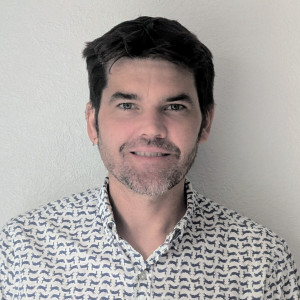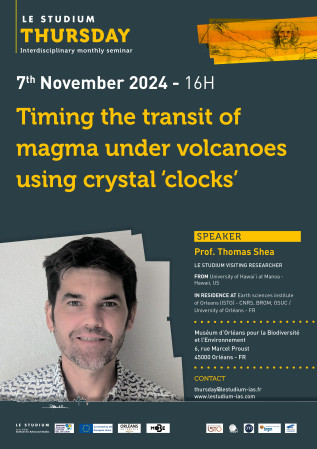Thomas Shea

From
University of Hawai'i at Manoa - US
In residence at
Earth sciences institute of Orleans (ISTO) - CNRS, BRGM, OSUC / University of Orléans - FR
Host scientist
Estelle Rose-Koga
BIOGRAPHY
Prof. Tom Shea was born and raised in France, pursuing studies in Earth Sciences in Montpellier and Clermont-Ferrand until obtaining a Master's degree in Volcanology and moving to the University of Hawai'i (United States) for his PhD degree in 2007. Tom obtained his PhD degree in 2010 and stayed close to his Hawaiian volcanoes ever since, first as a postdoctoral researcher and now, as an associate professor. He has been eagerly researching volcanoes, combining field work and mapping with laboratory experiments, computer models, and state-of-the-art chemical analyses of lavas erupted worldwide. He built expertise in volcanology by international collaboration with numerous colleagues and is currently investigating how minerals in magmas record their complex underground history as well as the timing of important magmatic events prior to eruptions. He shares diverse interests in Earth Sciences, and a thirst to understand the driving forces behind volcanic eruptions to better prepare residents for these natural hazards.
PROJECT
Timing Magma Transit in the Earth using Crystal Clocks
Volcanology is the branch of science that strives to understand how magmas are formed within the Earth, how they transit from the depths to the surface, and the various processes they undergo during their storage and transport before eruption. Diffusion chronometry is a recently booming field of volcanology, where spatial variations in the chemical information preserved in minerals and volcanic glass are leveraged to extract precious time information. Like tree rings, magmatic crystals display sharp variations in elemental compositions from their cores to their rims as they grow. These sharp changes tend to become more gradual as elements move from one region of the mineral to the other, at rates that have been calibrated in the laboratory. By studying the degree of smearing or diffusion of these elements, it is possible to calculate how long it took for between the time these minerals grew and eruption. This information is critical in order to understand how long magma chambers undergo recharge and unrest before an eruption. These 'crystal clocks' therefore require the movement rates of atoms in minerals to be well calibrated in the lab. However, a recent study from our group has shown problems with these calibrations, mainly due to the fact that experiments have largely studied diffusion between minerals and not for minerals surrounded by magma/melt. For this STUDIUM project, we propose to study diffusion in feldspar surrounded by basalt melt in one the world's most prominent experimental volcanology lab (ISTO in Orleans). Feldspar is nearly ubiquitous in basaltic magmas on earth. If, like in other minerals we studied, diffusion is much faster in the presence of melt, the community would have to reassess the timescales that were previously derived by diffusion chronometry. And crystal clock science would enter a new era in which experimental calibrations of diffusion rates would need to incorporate the effects of liquid melt.

